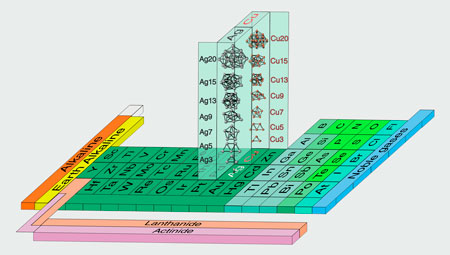
When the size of a metal nanoparticle (NP) is reduced to below ≈ 2 nm (i.e. less than ≈150 atoms) the quantum confinement of the free electrons causes the discretization of energy levels and, consequently, the lost of the metallic (or plamonic) properties, evolving to a non-metallic or excitonic state.
For the smallest AQCs, sizes below ≈ 1 nm (≈ 30 atoms), the dimensions are comparable to the Fermi wavelength, and the quantum confinement is so severe, that a difference of only one simple atom entails a completely different behavior.
The figure below shows a 3D Periodic Table of the elements to highlight the idea that, between the atomic behaviour and the bulk-like behaviour of NPs, a whole range of novel materials, with their own different size-dependent properties (i.e. different well-defined geometrical and electronic structures) appear at the Angstroms scale. Our current research interests in this novel and disruptive Angstroms technology of AQCs are:




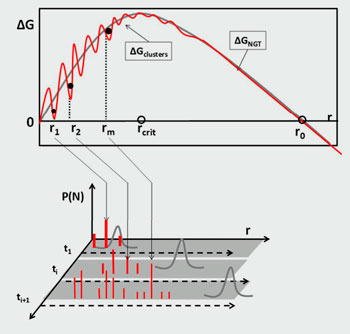
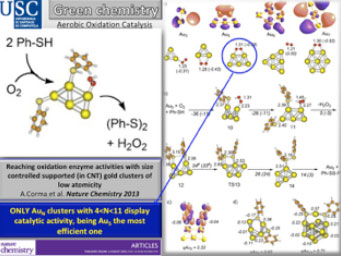 2) Catalytic Properties of AQCs.
2) Catalytic Properties of AQCs.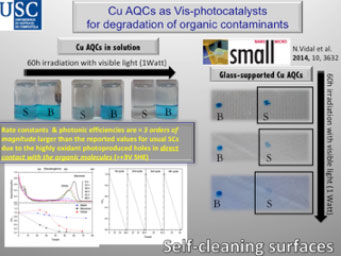
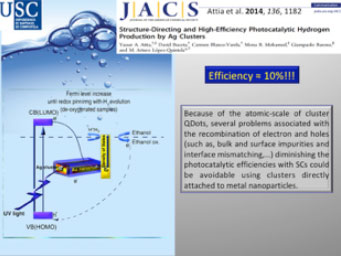
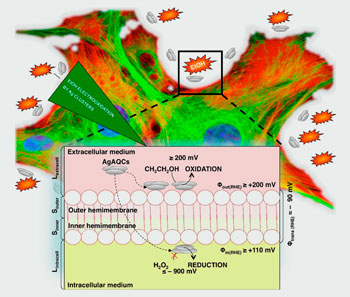 4) Electrocatalytic properties of AQCs.
4) Electrocatalytic properties of AQCs. 5) Biomedical properties of AQCs.
5) Biomedical properties of AQCs.